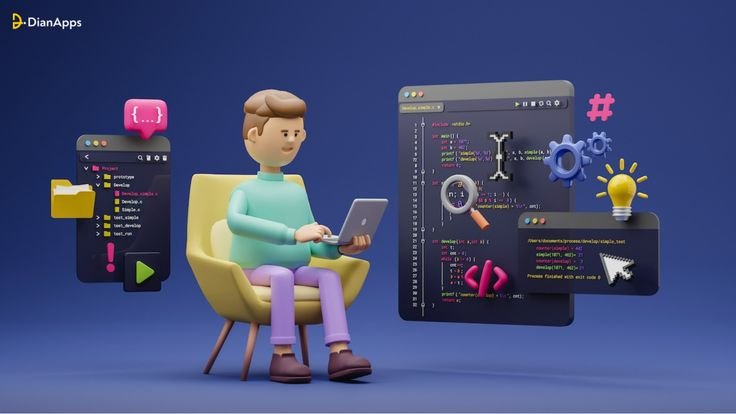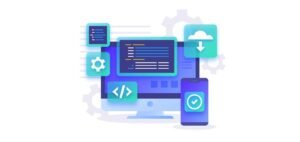1. HTML (Hypertext Markup Language):
HTML is the standard markup language for creating web pages and web applications. It defines the structure and content of web pages.

2. CSS (Cascading Style Sheets): CSS is used to style HTML elements and define their appearance, layout, and design. It controls aspects such as colors, fonts, spacing, and positioning.
3. JavaScript: JavaScript is a versatile programming language that enables interactive and dynamic behavior in web pages. It is used for implementing client-side functionalities like form validation, animations, DOM manipulation, and handling user events.
- jQuery: jQuery is a fast, small, and feature-rich JavaScript library that simplifies DOM manipulation, event handling, and animation. While its usage has declined with the rise of modern frameworks like React and Vue.js, it’s still prevalent in legacy codebases.
- D3.js: D3.js is a powerful JavaScript library for data visualization. It provides a variety of functions for creating interactive and dynamic charts, graphs, and maps using HTML, SVG, and CSS.
In addition to these core languages, frontend developers often use frameworks and libraries to streamline development and enhance productivity. Some popular ones include.
1. JavaScript Frameworks:

– React.js: Developed by Facebook, React.js is a widely-used library for building user interfaces. It emphasizes component-based architecture and provides tools for building reusable UI components.
– Angular: Developed by Google, Angular is a comprehensive framework for building web applications. It offers features like two-way data binding, dependency injection, and modular development.
– Vue.js: Vue.js is a progressive JavaScript framework for building user interfaces. It is known for its simplicity, flexibility, and efficient performance.
2. CSS Frameworks:
– Bootstrap: Bootstrap is a popular CSS framework that provides pre-designed components and responsive layout utilities, making it easy to create visually appealing and mobile-friendly websites.
– Tailwind CSS: Tailwind CSS is a utility-first CSS framework that offers a set of customizable low-level utility classes for building responsive and modern designs.
3. Other Languages and Tools:
-Sass (Syntactically Awesome Stylesheets): Sass is a CSS preprocessor that extends the functionality of CSS with features like variables, mixins, and nesting, making stylesheets more maintainable and efficient.
-TypeScript: TypeScript is a superset of JavaScript that adds static typing and other features to enhance code maintainability and scalability.
4.Responsive Web Design:



1 thought on “Programming languages for frontend developer”